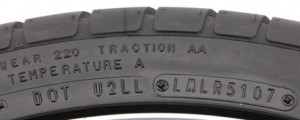Industry suggests getting new tires once they are between six and 10 years of age. The reason why is that air migrates through the tire, making it brittle and reducing its strength. The only way to prevent the air from migrating and reducing the strength of your tire is to remove the air from you tire all together. Then, replace it with pure nitrogen with nitrogen tire inflation. That way, you extend the life of your tire, giving it more of those golden years on the road instead of in the dump.
Just like how you can find the maximum tire pressure allowed for your tire, you can figure out how old your tire is looking on the outside. If the tire was made after the year 2000, it has four digits. The first two indicate the week, the last two the year. If the tire has only three digits, it was made prior to 2000, with the first two indicating the week, and the last digit indicating the year of the decade. Tires that are older than 10 years old are considered unsafe for driving. Perhaps it’s because by then, they’ve become brittle and have suffered from the old tire disease of oxidation. Give your tires the fountain of youth with nitrogen tire inflation.
Nitrogen tire inflation has been proven to extend the life of your tires. Many tires companies, including Michelin and Goodyear, support the practice of nitrogen tire inflation. It’s a practice that’s already being used by the airline industry and NASCAR. It’s about time that it’s used in the consumer market as well.






